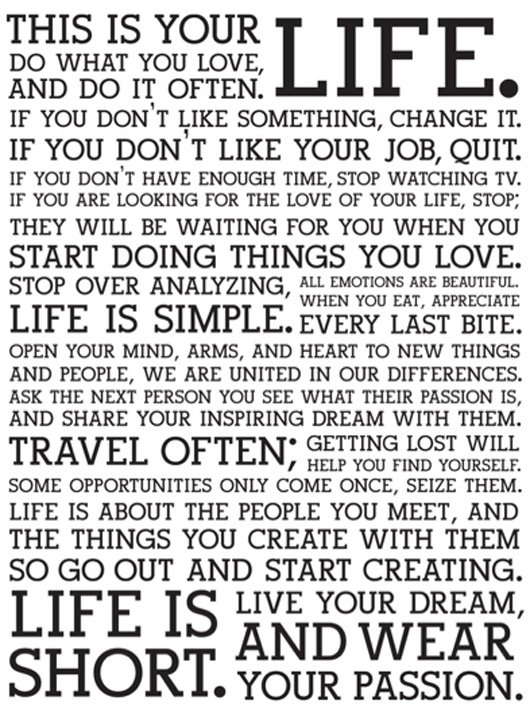Another GREAT insight from Talentsmart:
By Dr. Travis Bradberry
These days, we’ve all been on the receiving end of a scathing email, as well as its mysterious, vaguely pejorative cousins. You know the messages to which I refer. They don’t need exclamation points or all caps to teem with anger and drip with sarcasm. Dressing someone down via email is tempting because it’s easy—you have plenty of time to dream up daggers that strike straight to the heart, and you lack the inhibition that is present when the receiving party is staring you in the face. This type of email is known in cyberspace as “flaming,” and all such messages have a single thing in common—a complete and utter lack of emotional intelligence.
A recent survey (sponsored by communications device manufacturer Plantronics) reveals that 83% of today’s workforce considers email to be “critical” to their success and productivity. That’s more than the phone (81%), audio conferencing (61%), instant messaging (38%), or social media (19%). That’s probably because 90% of the workers surveyed reported that they regularly perform work outside of the office—whether in different company locations, client sites, off-site meetings, or when working remotely from home.
Since its inception, the role of online communication in how we interact with other people has been expanding—with no sign of slowing down. Email has been around long enough that you’d think that by now we’d all be pros at using it to communicate effectively. But we’re human and—if you think about it—we haven’t mastered face-to-face communication either. In fact, we’re hard-wired to struggle when it comes to keeping our emotions from obscuring our intentions (and sometimes derailing our progress in achieving our goals).
The bottom line is that we could all use a little help. The five strategies that follow are proven methods for keeping your emotions within reason, so that you don’t hit “send” while your emails, tweets, comments, and virtual chime-ins are still flaming.
1. Use Honest Abe’s First Rule of Netiquette. I know what you’re thinking: How could someone who died more than a century before the Internet existed teach us about email etiquette? Well, in Lincoln’s younger years, he had a bad habit of applying his legendary wit when writing insulting letters to, and about, his political rivals. But after one particularly scathing letter led a rival to challenge Lincoln to a duel, Lincoln learned a valuable lesson—words impact the receiver in ways that the sender cannot completely fathom. By the time he died, Lincoln had amassed stacks of flaming letters that verbally shredded his rivals and subordinates for their bone-headed mistakes. However, the important thing is that Lincoln never sent them. He vented his frustration on paper, and then stuffed that sheet away in a drawer. The following day, the full intensity of his emotions having subsided, Lincoln wrote and sent a much more congenial and conciliatory letter. We can all benefit from learning to do the same with email. Your emotions are a valid representation of how you feel—no matter how intense—but that doesn’t mean that acting on them in the moment serves you well. Go ahead and vent—tap out your anger and frustration on the keyboard. Save the draft and come back to it later when you’ve cooled down. By then you’ll be rational enough to edit the message and pare down the parts that burn, or—even better—rewrite the kind of message that you want to be remembered by.
2. Know the Limits of Virtual Humor. Some people show their displeasure with words typed in ALL CAPS and a barrage of exclamation points. Others, however, express dissatisfaction more subtly with sarcasm and satire. This latter kind is no less of a breakdown in the core EQ skill of self-management, and can be even more dangerous because it’s harder to detect. The sender can always convince him or herself that the spite was just a little joke. While a little good-natured ribbing can sometimes help to lighten face-to-face interaction—interaction with an arsenal of facial expressions and voice inflections to help you to convey the right tone—it’s almost never a good idea to have a laugh at someone else’s expense online. Online your message can too easily be misinterpreted without your body language to help to explain it, and you won’t be there to soften the blow when your joke doesn’t go over as intended. In the virtual world, it’s best to err on the side of friendliness and professionalism. For those times when you absolutely cannot resist using humor, just make sure that you are the butt of the joke.
3. People Online Are Still People (So Take the Time to Feel What They Feel). While entranced by the warm glow of a computer monitor, it’s sometimes difficult to remember that a living, breathing human being will end up reading your message. Psychologist John Suler of Rider University has found that people who are communicating online experience a “disinhibition effect.” Without the real-time feedback between sender and receiver that takes place in face-to-face and telecommunication, we simply don’t worry as much about offending people online. We don’t have to experience the discomfort of watching someone else grow confused, despondent, or angry because of something that we said. When these natural consequences are delayed, we tend to spill onto the screen whatever happens to be on our mind.
Averting such messages requires you to be intentional in applying your social awareness skills. Without being able to physically see the other person’s body language or hear the tone of his/her voice, you must picture the recipient in your mind and imagine what (s)he might feel when reading your message as it’s been written. In fact, the next time you receive a curt or outright rude email, put the brakes on before firing back a retort. Taking the time to imagine the sender and considering where he/she is coming from is often enough to extinguish the flames before they get out of control. Could the sender have misinterpreted a previous message that you sent to him/her? Could (s)he just be having a bad day? Is (s)he under a lot of pressure? Even when the other party is in the wrong, spending a moment on the other side of the monitor will give you the perspective that you need to avoid further escalating the situation.
4. Show How the Internet Feels ( ). Emoticons have a mixed reputation in the business world. Some people and even organizations believe that smiley faces, winks and other symbols of digital emotion are unprofessional, undignified, and have no place outside of a high school hallway. When used properly, however, a Dutch research team has shown that emoticons can effectively enhance the desired tone of a message. The team led by Daantje Derks at the Open University of the Netherlands concluded that “to a large extent, emoticons serve the same functions as actual nonverbal behavior.” Considering that nonverbal behavior accounts for between 70 and 90% of a message when communicating face to face, it’s time to ditch the stigma attached to emoticons in the business setting. For those leery of dropping a smiley face into your next email, I’m not suggesting that you smile, wink, and frown your way through every email you write. Just don’t be afraid to peck out a quick semicolon-dash-right parenthesis the next time you want to be certain that the recipient is aware of your tongue planted firmly in cheek.
5. Know When Online Chats Need to Become Offline Discussions. Managing online relationships will always be a somewhat difficult task for people programmed to communicate in person. However, managing critical email conversations is even more difficult for those programmed to communicate via email. Significant, lengthy, and heated email exchanges are almost always better taken offline and finished in person. With so much communication via email these days, it can be hard to pull the trigger and initiate a face-to-face conversation when you sense that an online interaction is becoming too heated or simply too difficult to do well online. Online technologies have become enormously useful for increasing the speed and efficiency of communication, but they have a long way to go before they become the primary source for creating and maintaining quality human relationships.

